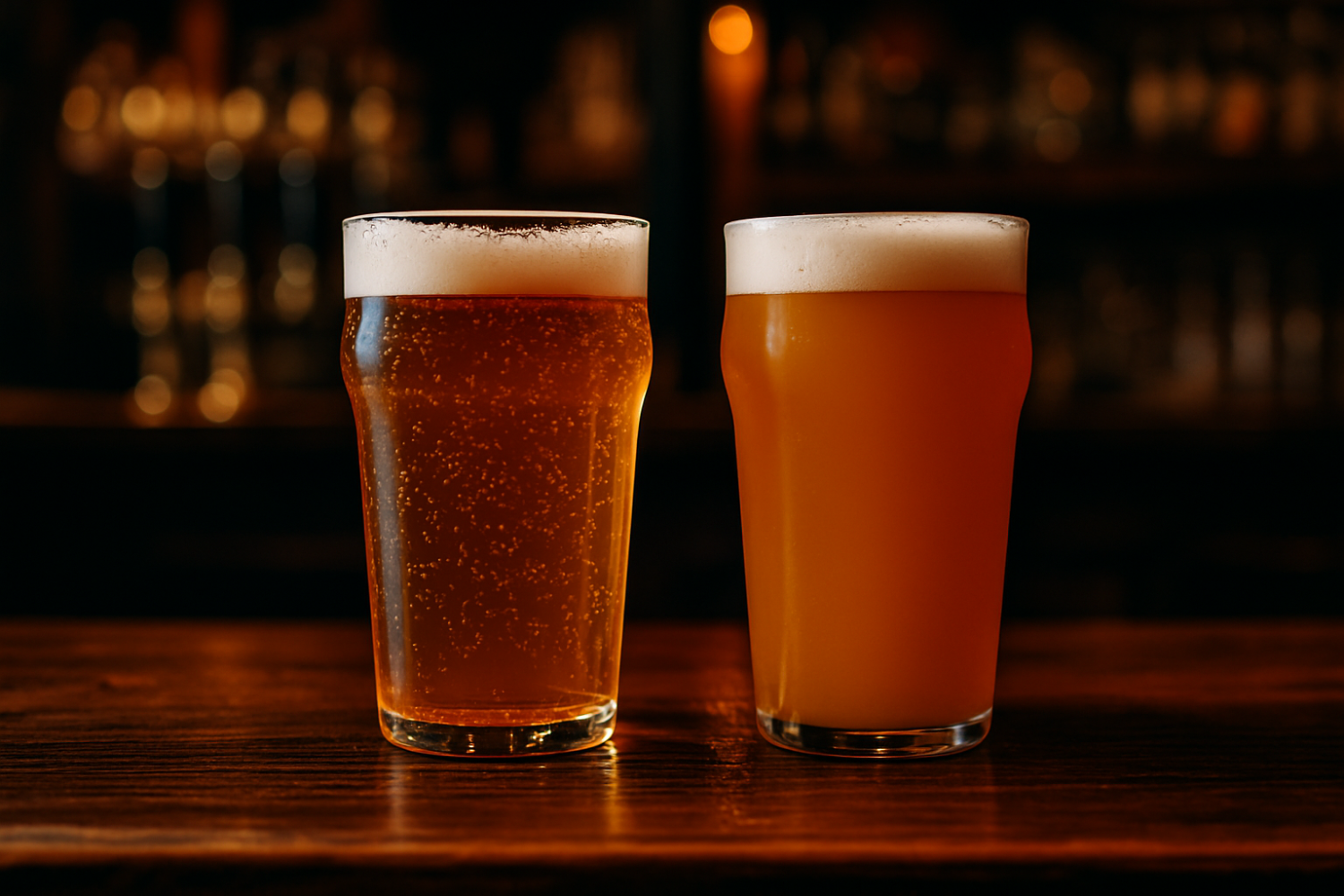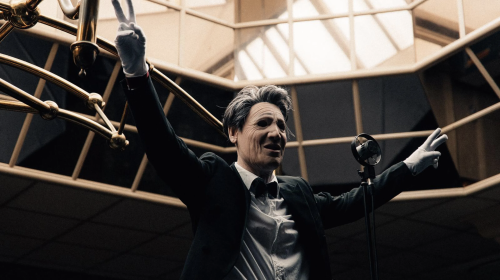In the world of craft beer, few styles have achieved the fame, obsession, and debate of the India Pale Ale (IPA). For years, IPA has dominated taprooms and brewery menus, becoming the flagship style that defines modern American craft brewing. From the hop-forward bite of the classic West Coast IPA to the smooth, juicy haze bombs of New England, the style has evolved dramatically.
One of the most common questions from casual drinkers and even new craft beer enthusiasts is: What’s the difference between a traditional IPA and a hazy IPA? The answer requires diving into history, brewing techniques, flavor profiles, and the culture that surrounds each style.
This article breaks down everything you need to know about IPA vs hazy IPA — from origins and brewing science to taste differences, food pairings, and why the haze craze isn’t going anywhere.
What Is an IPA?
Origins of the India Pale Ale
The India Pale Ale (IPA) traces its roots back to 18th-century England. Exported to British colonies in India, the beer was brewed with higher hop content and elevated alcohol levels to help it survive long sea voyages. The hops served as a natural preservative, giving IPA its distinctively bitter edge.
By the time the style migrated to the U.S., American brewers embraced it with their own twist: bold hop varieties grown domestically, imparting flavors of pine, citrus, and resin. This birthed the American IPA, which became the standard bearer of the U.S. craft beer revolution in the late 20th century.
Classic IPA Profile
- Appearance: Clear golden to amber.
- Flavor: Strong hop bitterness, often balanced with malty backbone.
- Aroma: Pine, citrus, resin, floral, sometimes dank.
- Mouthfeel: Crisp, dry, refreshing.
- ABV: Typically 6–7.5%.
Classic IPAs focus on bitterness and clarity, delivering a sharp hop punch that lingers on the palate.
What Is a Hazy IPA?
The Rise of New England IPAs
The hazy IPA, also known as the New England IPA (NEIPA), emerged in the mid-2010s as a radical shift from the bitterness-heavy IPAs dominating the scene. Originating in Vermont and Massachusetts, breweries like The Alchemist (with its legendary Heady Topper) set the stage for a softer, juicier, cloudier version of the IPA.
Hazy IPA Profile
- Appearance: Opaque, turbid, resembling orange juice.
- Flavor: Fruity, juicy, low bitterness. Tropical flavors like mango, pineapple, citrus, and peach dominate.
- Aroma: Bursting with hops but in a softer, fruit-forward way.
- Mouthfeel: Smooth, creamy, pillowy, sometimes described as “soft.”
- ABV: Usually 6–8%, but double hazies can climb higher.
Unlike traditional IPAs, hazy IPAs are brewed to minimize bitterness and maximize fruitiness and drinkability. They rely on dry hopping, specific yeast strains, and high-protein grains like oats and wheat to create their signature haze.
Key Differences: IPA vs Hazy IPA
1. Clarity vs Haze
- IPA: Clear, golden, sparkling in the glass.
- Hazy IPA: Cloudy, opaque, often resembling juice.
The haze comes from proteins, hop oils, and yeast suspended in the beer. It’s intentional, not a flaw.
2. Bitterness vs Juiciness
- IPA: Sharp hop bitterness dominates.
- Hazy IPA: Low bitterness, replaced with juicy, fruity flavors.
Classic IPAs are hop bombs, while hazy IPAs are fruit-forward and soft.
3. Mouthfeel
- IPA: Crisp and dry.
- Hazy: Creamy, smooth, often pillowy.
Hazy IPAs often include oats and wheat to build body.
4. Aroma
- IPA: Piney, resinous, dank, floral.
- Hazy: Explosive tropical fruit, citrus, juice-box vibes.
5. Cultural Identity
- IPA: Symbol of the original U.S. craft beer boom, pioneered by breweries like Sierra Nevada, Stone, and Lagunitas.
- Hazy: Poster child of modern craft’s second wave, defined by breweries like Tree House, Trillium, and The Alchemist.
Brewing Science: Why the Haze?
The haze isn’t just for looks. It results from specific brewing choices:
- Dry hopping: Adding hops late in the process extracts flavor and aroma without bitterness.
- Yeast strains: Some hazy IPA yeasts leave compounds that enhance fruit notes and haze stability.
- Grains: Wheat and oats add proteins that thicken mouthfeel and contribute to haze.
- Unfiltered: Unlike West Coast IPAs, hazy IPAs skip heavy filtration, leaving suspended particles.
Together, these elements create the signature juicy, tropical, smooth hazy IPA that’s dominated taplists in recent years.
Popular IPA Substyles
IPA Substyles
- West Coast IPA: Clear, bitter, piney, dry finish.
- East Coast IPA: More malt-forward, slightly sweeter.
- Double/Imperial IPA: Higher ABV (8–10%), intense bitterness.
- Session IPA: Lower ABV (4–5%), lighter but still hoppy.
Hazy IPA Substyles
- New England IPA (NEIPA): Soft, juicy, hazy.
- Double Hazy: Stronger (8–9%), more intense fruit flavors.
- Milkshake IPA: Brewed with lactose for sweetness and creaminess.
- Oat Cream IPA: Similar to milkshake IPA but heavier on oats for silkiness.
Food Pairings with IPAs
IPA Food Pairings
- Spicy foods (Indian curries, buffalo wings) — bitterness cuts through heat.
- Grilled meats — balances char and smoke.
- Sharp cheeses — contrasts bitterness.
Hazy IPA Food Pairings
- Tropical dishes (Caribbean, Hawaiian, Thai) — juicy flavors complement fruit and spice.
- Brunch foods — pairs with eggs, avocado toast, citrusy dishes.
- Desserts — fruit-forward hazies pair with cheesecake or sorbet.
The Cultural Divide: IPA Purists vs Haze Heads
Classic IPA fans sometimes dismiss hazy beers as “juice bombs” with no backbone. Hazy IPA fans counter that West Coast IPAs are too bitter, punishing to drink, and outdated.
In reality, both styles serve different audiences:
- West Coast IPAs reward hop heads who crave piney bitterness.
- Hazy beers bring newcomers into craft beer with softer, juicier flavors.
The beauty of the craft scene is that both styles thrive side by side.
Why the Hazy IPA Craze Isn’t Going Anywhere
Approachability: Less bitter = more appealing to casual drinkers.
Aesthetic: Instagram-worthy haze.
Flavor exploration: Brewers can experiment with fruit-forward hop varieties.
Market demand: Hazy IPAs consistently rank among the top-selling craft beer styles.
FAQs: IPA vs Hazy IPA
Q: Is a hazy IPA stronger than a regular IPA?
A: Not always. Both styles range from 6–8% ABV. Double hazies can be stronger, but a standard hazy is similar to a regular IPA.
Q: Why is hazy IPA cloudy?
A: Proteins from oats/wheat, certain yeast strains, and hop oils create haze. It’s intentional, not a defect.
Q: Do hazy IPAs taste sweeter?
A: Not sweeter, but less bitter. The fruit-forward flavors give the impression of sweetness.
Q: Do hazy IPAs go bad faster?
A: Yes. Hoppy beers, especially hazy IPAs, lose aroma and flavor quickly. Freshness matters.
Q: Can you filter a hazy IPA?
A: You could, but it would remove the haze and change the style entirely.
Q: Are hazy IPAs more expensive?
A: Often yes, because they use more hops, specialty grains, and require careful brewing.
Q: Are West Coast IPAs still popular?
A: Absolutely. While hazies dominate trends, many drinkers still love classic bitter IPAs.
The difference between IPA and hazy IPA boils down to clarity, bitterness, mouthfeel, and cultural identity. Traditional IPAs are crisp, bitter, and piney, while hazy IPAs are smooth, juicy, and fruit-forward.
Both styles represent milestones in craft beer evolution — one marking the early craft revolution, the other defining the modern haze craze.
If you’re a purist sipping on a West Coast IPA or a haze lover chasing juice bombs, the good news is the craft beer world has room for both.
At the end of the day, the best beer is the one you enjoy most. For me, I love the Sam Adams Non Alcoholic “Just The Hazy” Hazy IPA.







